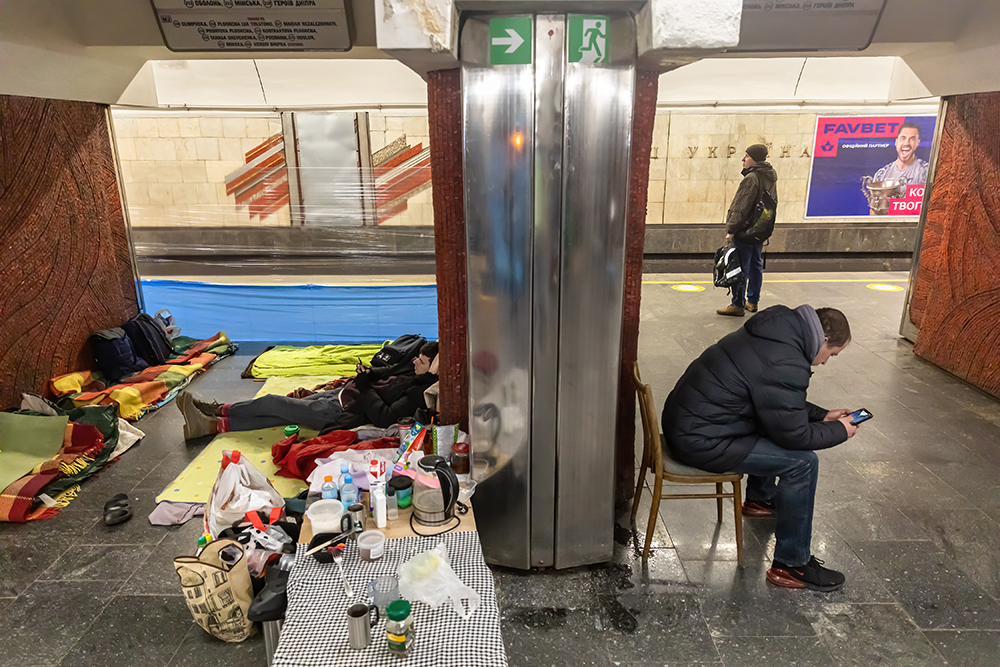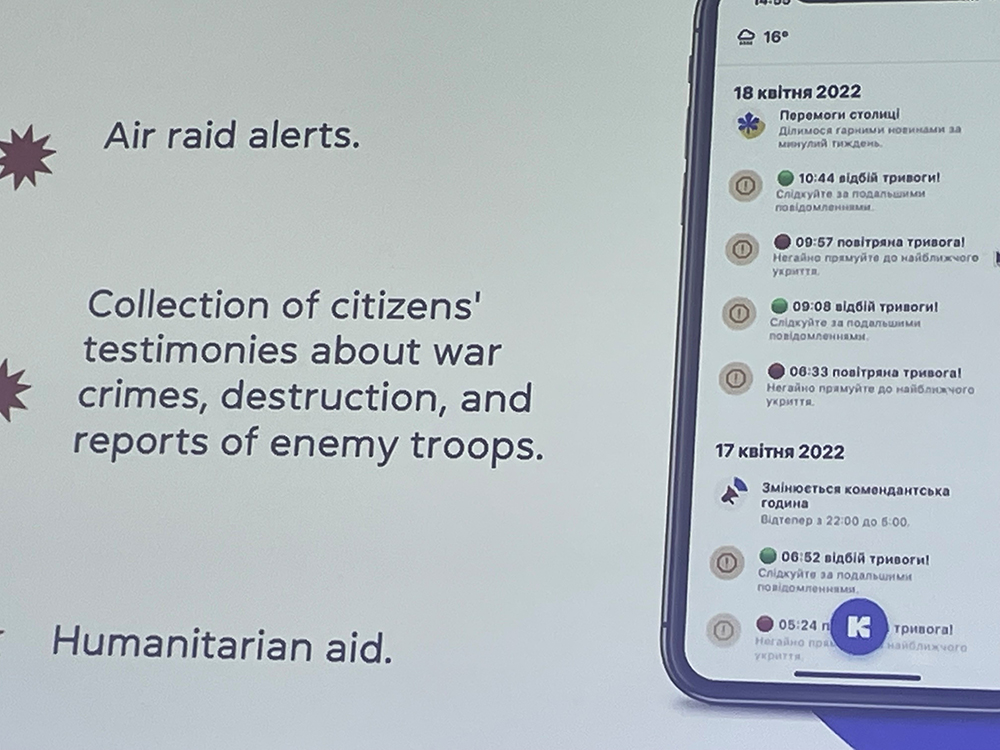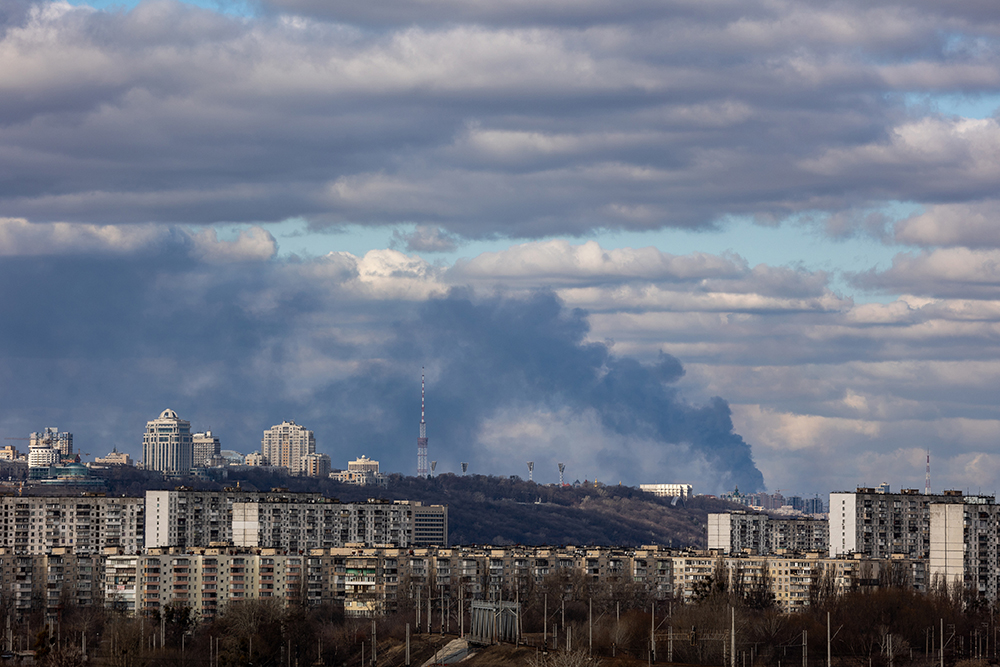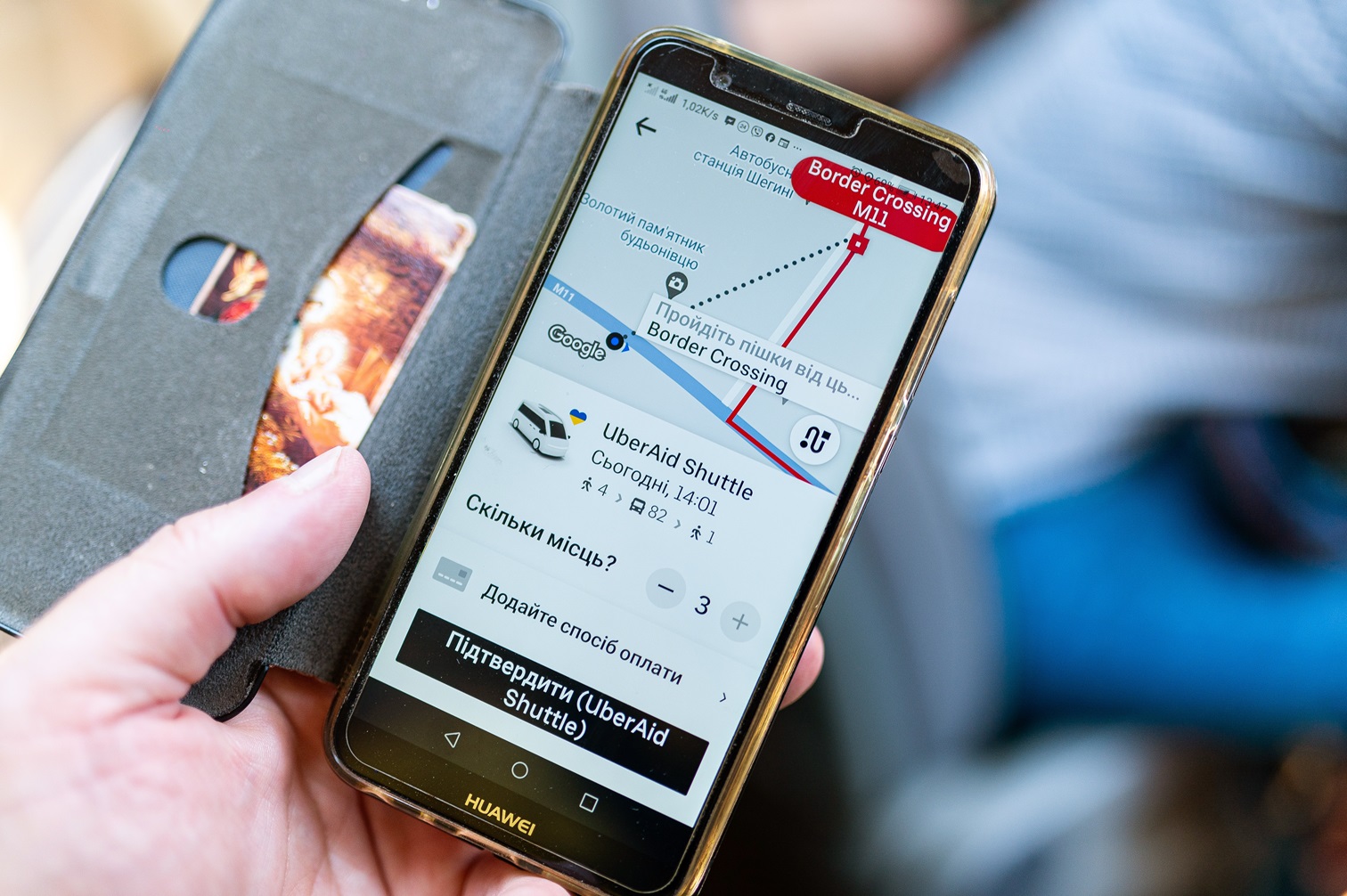
It is a truism that businesses have to adapt. But very few have to adapt to a war. When Russia launched its invasion of Ukraine on 24 February this year, authorities in the Ukrainian capital Kyiv realised that information needed to be disseminated quickly to citizens. They had the perfect means to do it: Kyiv Digital, an app which was originally developed to help people with transportation in the city, could be usefully repurposed to give residents life-saving news.
It is all a far cry from January 2021, when the app was launched to combine city services - including transit and parking ticketing – on one app to help people navigate the city of Kyiv, allowing them to plan routes, track traffic, see parking spaces and view transit schedules.

“The first application was electronic tickets covering all kinds of transport that we have in the city and there is a wallet inside the application where you can store your ticket,” explained Oleg Polovynko, CIO of Kyiv City Council, during a presentation by video at the Transport Ticketing Global 2022 conference in London.
“At the same time, we included the schedule of public transport so you can plan your route and pay. Another one was parking and the app allows you to pay after you’ve finished your stay. In addition you can find free spaces on the map and plan your route there, with different kinds of tickets for different zones.”
Users could buy trips at home, while on the road in their cars or while using public transport, paying with Masterpass or a bank card and storing tickets in the app’s wallet. There is also a virtual transport card and a facility to pay parking fines. In short, all manner of useful municipal functions: so far, so normal. But normal is not the case anymore. In fact, the app still does all those things – but the Russian invasion has brought numerous challenges for Kyiv’s authorities: as missiles target the city, the app itself has expanded to cover areas that transport planners hope they never have to deal with.
‘Today’s realities’
“Change management is our daily task,” says a spokeswoman for Kyiv City Council in an email to ITS International. “Usually, adding new elements and features takes about three to four weeks of development, and we launch a new service in about two months. However, we have managed to quickly adapt the Kyiv Digital app to today’s realities.”
One of these is that the metro of Kyiv – once celebrated for its beautiful stations - became known worldwide as a place of safety for residents as Russian air raids brought terror and destruction to the city.

The app now has a military section with services such as a map of bomb shelters so that every user can find one. “Also, we provide official and reliable information for the citizens: we warn them of air raids, notify them when the potential attack has ended, and share the important news (when curfew changes or bridges or streets are closed), statements by the mayor and so on,” the spokeswoman says. “At the same time, we personify notifications to reduce general notifications.”
From the very beginning, the council planned to build a digital ecosystem of administrative services which combined city and state activities online in a user-friendly way. “We have been continuously developing the system, adding more and more city projects and features so that the citizens can comfortably use the services, engage in initiatives, and have a cultural experience in one app,” the spokeswoman says. “We strive to create a relationship of trust between the city, its residents and visitors.”
This bond of trust, which the app in its original incarnation was designed to foster, must have helped now that the app is delivering life-and-death information.
“The app’s importance and usefulness are evidenced by the fact that 1.7 million people have downloaded it,” the spokeswoman suggests. “Kyiv Digital has changed during the war and has created a number of working businesses because Google Maps does not provide the same up-to-date information about individual opening hours or traffic jams. You can check out a map of bomb shelters, map of available pharmacies and the access of insulin, a map of grocery stores, a map of points with free water and bread, pet shops, service stations, humanitarian headquarters, etc.”
Information double
There are 10 interactive maps in total, creating what she calls Kyiv’s “information double” during martial law.
As well as the immediate danger to life and property from air raids, there is also the problem of pollution as bombs and missiles create conflagrations with thick smoke. “During the war we have different challenges and one of them is air quality because around the city we have a lot of fires,” says Polovynko.
The Kyiv Digital app is now used for air quality monitoring, with users able to check readings from a range of sensors around the city for dangerous particles in the air. It also sends push notifications about these and other areas of concern.
Residents who use the app can be identified and authorised by the city via their bank ID. This has proved useful in a warzone where infiltration by enemy forces is a genuine concern.
 “During the war we have different zones in the city, some of which are restricted,” he explains. “So we created a digital ID service which helps us to manage entrance to these.”
“During the war we have different zones in the city, some of which are restricted,” he explains. “So we created a digital ID service which helps us to manage entrance to these.”
Since it is important for life to continue as close to normal as possible, mundane city services are still available in the app, including democracy services to get users closer to decision making, with functions such as polls, petitions, votes and participation in budgets. One of these has had quite an immediate impact: in June it launched a service to alter street signs in the city which had a connection with the invaders. “More than 300 Russian street names were changed by our citizens in one week,” says Polovynko. “We have the results and permission for changes for the next step.”
The Kyiv Digital team reacted very quickly to the invasion. From the end of February to June, Russian forces launched 2,500 missiles at Ukraine, with hundreds targeting Kyiv itself. In the last few weeks, missiles have hit residential buildings in Kyiv. Air raid warnings have become an important part of the app notification system. “Our team never thought that we will create and develop app functionality for missile attacks,” says Polovynko pointedly.
Fast communication
The app is used for official city announcements and information on housing and public utilities as well as those maps which have literally helped citizens to carry on living: finding food, medicine, petrol and refuge.
“These were war services,” he adds. “Kyiv Digital is now a way for citizens to ask for help and find a way to survive. Now as the functionality increases, we will be collecting information about bomb damage, about health and what our citizens need in situations of the war.”
Perhaps most sobering of all, the app is used to create reports of enemy troop movements, information about humanitarian aid – and to collect citizens’ testimony about destruction of homes and businesses. Kyiv Digital is also being turned to something which is almost unimaginably far from a simple city app: war crimes. This is a terrible prospect, but a very real one: in the city of Bucha, east of Kyiv, the bodies of hundreds of civilians were discovered after Russian troops withdrew.

“We would like users to continue to write us comments and feedback on the services but now we collect reports of war crimes, destruction and compensation for damage to property caused by the Russian invaders,” the spokeswoman confirms.
Improving the app is one thing, but to maximise its reach the city council has also upgraded Wi-Fi access throughout the city by connecting more than 200 bomb shelters to the internet, uniting internet providers. It has also fixed almost 100 cables that had been cut by military action in the city and ran 5km of new optical fibre.
“We have really redesigned and changed the way we communicate with our citizens,” says Polovynko. “We have seen from our experience of this four months that we need to communicate in a very short way, to communicate very fast.”
If the Kyiv Digital team is worried, you would not know it. “Behind all of this is the hard work of more than 1,000 people,” the spokeswoman concludes. “Unfortunately, it is not very safe in the capital now because of missile attacks. However, nothing scares our team! We work 24/7 for our citizens and do everything to bring victory closer because together we are invincible.”
As an example of pivoting from a basic transport application to something far more complicated, Kyiv Digital is an impressive transportation case study. But as an illustration of the resilience of a city and country in the face of appalling aggression, it represents a human triumph which resonates beyond business sectors and borders.












